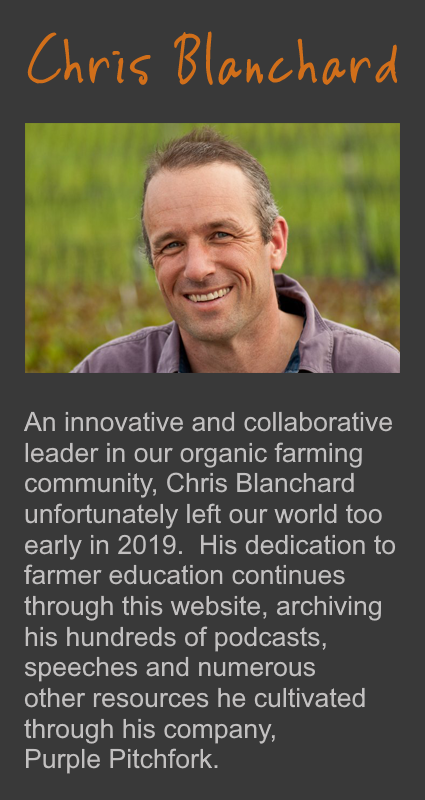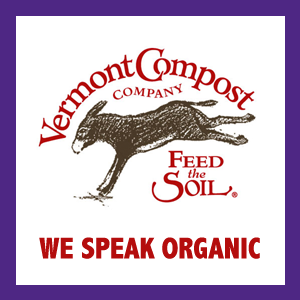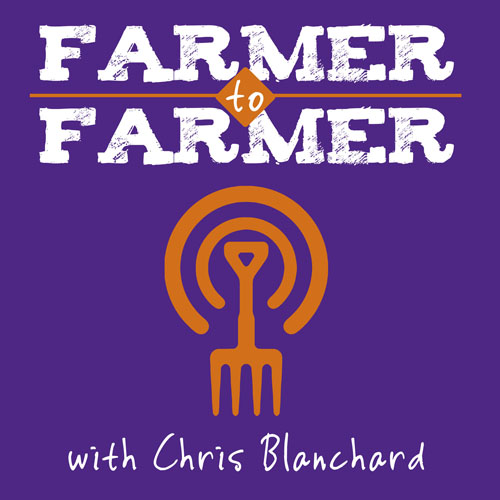About a month ago, I packed up Purple Pitchfork (and everything else in my life) and moved to Madison, Wisconsin. This Saturday, my partner and I finally made it to the farmers’ market on the capitol square - that’s the famous one here, and the largest in the country. It was a nice day, and we got some great eats, but I was surprised to see how many of the farmers simply didn’t stand out. There was a lot of beautiful produce - it’s clearly a good year for beets - and some unique items, but I was surprised at how few of the vegetable stands really set themselves apart from the sea of vendors.
On the other hand, the vegetable stands that stood out were largely the growers who have been at the market for decades.
When I go into Whole Foods or HyVee, I rarely see un-branded produce from national and international vendors - almost everything has a company name on the twist-tie, bag, or sticker. Sales are based largely on emotion, and brand identification creates a level of comfort for the customer - whether they are buying from a local farmer or an international powerhouse.
As local vendors, we should be capitalizing on the desire of our customers for connection and the corresponding comfort it brings by making ourselves and our products stand out, whether it’s at the grocery store or the farmers’ market. A beautiful display works for making the first sale, but it doesn’t help people find you the next week.
Even for a national brand like Bunny Luv carrots, the brand marker makes the product a known quantity. You want to be a known quantity as well. Your name and location provide a mental “hook” for your customers. That hook may allow them to feel comfortable with you as a person (“I know something about this person”), provide a conversation starter (“How far is it from Viroqua?”), or give them something to talk about when they get home (“This lettuce is from Rock Spring Farm”). It also provides a reference point that they can return to, or that they can refer friends and colleagues to.
Farmers’ market signage doesn’t have to be fancy, and it doesn’t have to cost a lot. For years, our farm identification at farmers market was written on a chalkboard with chalkboard markers. It was a simple, inexpensive, and flexible way to say who we were, and hung readily from our market canopy.
While some people identified my farm by name, I was always surprised at the number of people who didn’t know it, even after we added it to our awning and refrigerated truck. But everybody readily recognized two things about our stand: my hat (a vaguely Crocodile Dundee-style hat that I reserved for farmers market) and our homemade cedar display boxes. Very rarely did anybody come looking for Rock Spring Farm carrots in our early years, but they did come looking for “the carrots from the man in the hat.”
Other examples of market branding that I’ve seen over the years include:
(By the way, branding doesn’t have to be a look. If you’ve ever been to Pike’s Place Market in Seattle, you probably know the guys who throw the fish around - but you probably don’t know the name of their business.)
Most importantly, find a consistent way to make you and your market stand stand out, week after week.
On the other hand, the vegetable stands that stood out were largely the growers who have been at the market for decades.
When I go into Whole Foods or HyVee, I rarely see un-branded produce from national and international vendors - almost everything has a company name on the twist-tie, bag, or sticker. Sales are based largely on emotion, and brand identification creates a level of comfort for the customer - whether they are buying from a local farmer or an international powerhouse.
As local vendors, we should be capitalizing on the desire of our customers for connection and the corresponding comfort it brings by making ourselves and our products stand out, whether it’s at the grocery store or the farmers’ market. A beautiful display works for making the first sale, but it doesn’t help people find you the next week.
Even for a national brand like Bunny Luv carrots, the brand marker makes the product a known quantity. You want to be a known quantity as well. Your name and location provide a mental “hook” for your customers. That hook may allow them to feel comfortable with you as a person (“I know something about this person”), provide a conversation starter (“How far is it from Viroqua?”), or give them something to talk about when they get home (“This lettuce is from Rock Spring Farm”). It also provides a reference point that they can return to, or that they can refer friends and colleagues to.
Farmers’ market signage doesn’t have to be fancy, and it doesn’t have to cost a lot. For years, our farm identification at farmers market was written on a chalkboard with chalkboard markers. It was a simple, inexpensive, and flexible way to say who we were, and hung readily from our market canopy.
While some people identified my farm by name, I was always surprised at the number of people who didn’t know it, even after we added it to our awning and refrigerated truck. But everybody readily recognized two things about our stand: my hat (a vaguely Crocodile Dundee-style hat that I reserved for farmers market) and our homemade cedar display boxes. Very rarely did anybody come looking for Rock Spring Farm carrots in our early years, but they did come looking for “the carrots from the man in the hat.”
Other examples of market branding that I’ve seen over the years include:
- Have everybody at your stand wear the same shirt. At Harmony Valley Farm’s market stand, each member of their staff was wearing a bright red shirt with the farm name and logo. Aprons work for this as well, and provide a little more flexibility.
- Color-coordinate your stand. At Luna Circle Farm’s market stand, the awning and table cloth are purple (and it’s been that way for 20 years).
- A frame around the stand that always has something hanging from it, whether it’s pepper ristras or garlic braids.
- Hats are always popular, whether they are crazy (like the guy at Marsden’s Pure Honey, who wears a bee-hive on his head) or just distinctive.
(By the way, branding doesn’t have to be a look. If you’ve ever been to Pike’s Place Market in Seattle, you probably know the guys who throw the fish around - but you probably don’t know the name of their business.)
Most importantly, find a consistent way to make you and your market stand stand out, week after week.




 RSS Feed
RSS Feed
